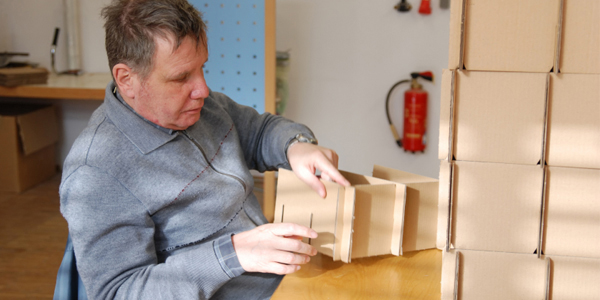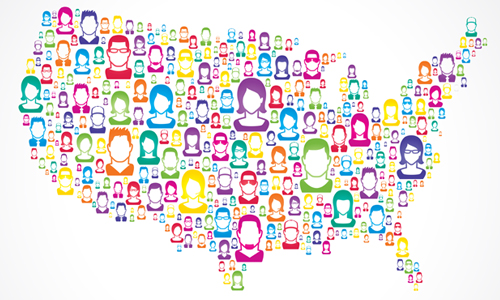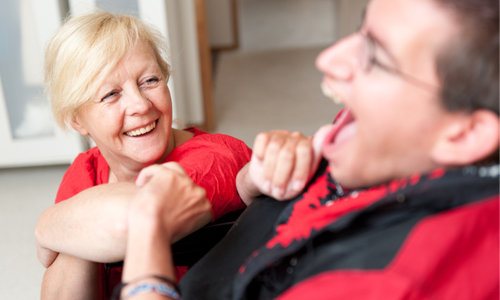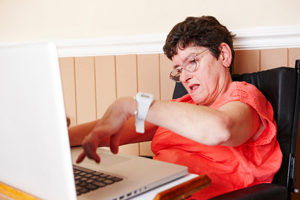
How are jobs for people with disabilities?
Do you have a regular job in the community?

There was a time when many thought people with disabilities couldn’t work.
Today thousands of people with disabilities have jobs.
But is it enough?

We want to know how are jobs going for people with disabilities now?

This is what we did
We made a list of questions about aging and housing for people with disabilities. We called this list the FINDS survey.

We asked many people to take the survey using a computer.
About 5,000 people completed the survey.
People from all 50 states completed the survey.

Most of the people were family caregivers.


This is what caregivers said about jobs
About 2 out of 10 people with disabilities have a job.

4 out of 10 people with disabilities who have a job earn less than minimum wage.


8 out of 10 people with disabilities who have a job like what they do.


5 out of 10 people with disabilities who don’t work can’t get the support they need to get a job.


The answer to the question
How are jobs for people with disabilities?

The good news is:
- Some adults have jobs in the community.
- Most like what they do.

The bad news is:
- Most adults do not have a job.
- Most adults who have a job do not earn enough to support themselves.
We need to do better!

Today we know people with disabilities CAN have jobs in the community with real pay.
- People want to work.
- People need to make at least minimum wage.
- People need support to find a good job.

TAKE ACTION! Share this with others
We can make life better for people with disabilities and families.
Show this to people in your life:
- Show your DSP
- Show your family
- Show your supervisor at work
Show this to people who can make life better for lots of people with disabilities
- Show policy makers
- Show self-advocacy groups
- Show service providers
Use this information to make your life better
Information about the knowledge translation of this research
Who did this knowledge translation?
This knowldege translation was created by the Research and Training Center on Community Living at the Institute on Community Integration, University of Minnesota.
Who did this research?
The Arc of the United States and the Research and Training Center on Community Living at the Institute on Community Integration, University of Minnesota
Who wrote the report?
Lynda Anderson, Sheryl A. Larson, and Allise Wuoria. Collaborators were Peter Berns, Ann Cameron Caldwell, and K. Charlie Lakin
What is the title of the report?
2010 FINDS National Survey Technical Report Part 1: Family Caregiver Survey
Where can I find the full report?
You can find the report at these websites:
This is the full report by the University of Minnesota:
rtc.umn.edu/misc/pubcount.asp?publicationid=222
This is a summary of the report by the Arc of the United States:
www.thearc.org/document.doc?id=3672
Report citation
Anderson, L.L., Larson, S.A., & Wuorio, A. (2011). 2010 FINDS National Survey Technical Report Part 1: Family Caregiver Survey. Minneapolis: University of Minnesota, Research and Training Center on Community Living.
